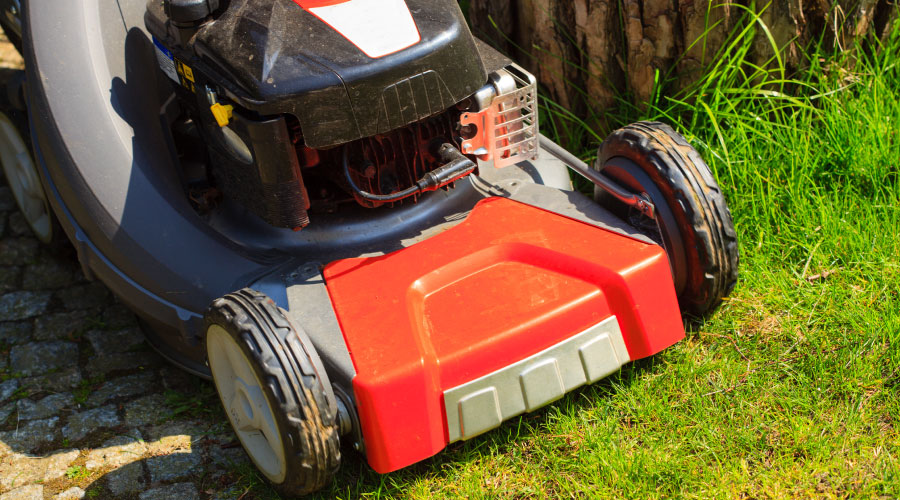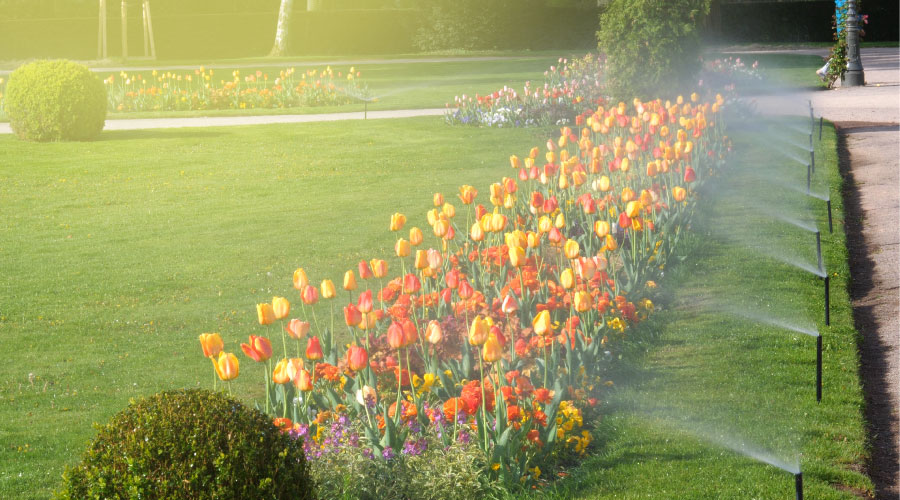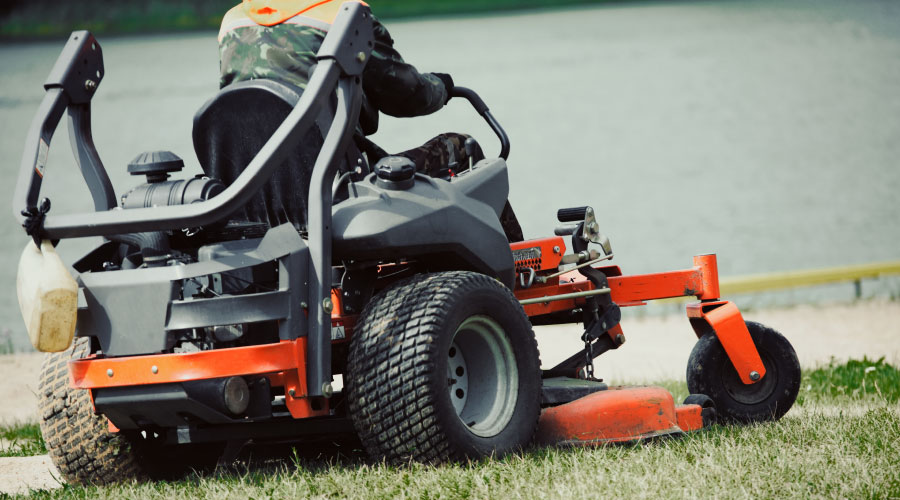Getting the Green Light
Spring signals managers to prepare for warm-weather tasks
Once the last snowflake melts, grounds care managers can turn their attention to making sure their departments are ready to hit the grounds running. In spring, managers put schedules in place, while crews put away winter equipment, prepare spring and summer equipment for use, and prepare the turf for growing season.
Unpredictable changes in weather are common in spring, so it is important that managers do not jump the gun on the warm season. They should, however, be ready to have crews start warm-weather work when spring hits. For example, plowing equipment should not be put away until the likelihood of spring snow is minimal.
“Sometimes, it’s hard to know when we can switch from winter to spring,” says Bill Thistlethwaite, superintendent of landscape services at the University of Notre Dame. “All we can do is just tread water until spring. You have to put yourself in such a position so you are ready when the weather breaks.”
After this year’s mild winter in most parts of the country, managers say they feel more prepared for the growing season. Crews have been able to get ahead on cleanup from winter, one of the first items on many departments’ spring turf-care agenda.
Cleanup
Melting snow and ice reveals many types of debris, including leaves, twigs, litter, salt and sand.
“One of the first things we do is drive a street sweeper around the campus to collect sand from streets and terraces so it doesn’t go down storm sewers,” says Gene Turk, buildings and grounds supervisor at the University of Wisconsin-Madison. “The cleanup of leaves, litter and twigs allows mowers to get out there and have free sailing.”
Additional cleanup duties include cutting back perennials, repairing or removing bent and broken branches on trees and shrubs, and attending to areas of grass with winter-kill patches or tire tracks.
Grounds managers also might need to schedule time for crews to resod or relevel dirt in damaged areas.
Managers also need to prioritize additional spring grounds maintenance, such as remulching tree rings and beds, as well as pruning trees and shrubs.
“Pruning is best right before [buds on trees] are going to pop,” Walker says. “It’s less stressful on [trees and shrubs], and it is easier to see where the cuts need to be made.” Pruning is not as noticeable on the trees and shrubs if the leaves can fill in afterward.
Crews also might need to set aside time for bed edging and edging along tree rings or other natural edges.
“Crews should use a spade or a bed-edging machine to make a nice, crisp edge between mulch and grass,” says Cathy Walker, landscape management consultant for Landscape Solutions.
Chemical Considerations
After cleanup is finished, managers will need to consider applying pre-emergent weed-control chemicals — also known as crabgrass preventer — when turning flower beds and tending to mulched areas. It is important, however, that grounds staff apply pre-emergent weed-control chemicals when the ground temperature is about 50 degrees in order to get the maximum performance out of the chemicals.
“Crabgrass starts to germinate at a ground temperature of about 55 degrees,” says Bruce Roberts, facility maintenance foreman at Illinois Central College in Peoria. “If you wait until then, the chemicals are ineffective, and you’re wasting money.”
Mild winter weather already has resulted in early weed growth in some areas.
“Our winter has been very strange,” says David Coutu, superintendent of grounds management at Hartford (Conn.) Hospital. “I think the temperature of lawns is such that there may not be that window of time to successfully prevent crabgrass.”
After aerating a large part of the campus, Coutu says the ground is suitable to take fertilization, adding that the department usually applies fertilizer just before it rains. Spring also is a good time opportunity to apply additional chemicals, such as pesticides and herbicides.
“Some managers might want to use dormant oil or horticultural oil on trees and shrubs to suffocate any eggs or insects,” Walker says. “There also are new products that are injected into trunks to prevent insects and fungus.”
Equipment Issues
Once snow removal is no longer an issue, departments can put away snow-removal equipment and change over all-season equipment to prepare for spring activities. Staffs should remove snow-removal attachments and protective caps and snow shields, and they can take off snow tires and replace them with tires that are less likely to leave tracks on turf areas.
“Grounds departments should do a final inspection on all equipment to make sure it is in working order,” Walker says. “And all the parts you might need through the summer, such as filters, should be ordered.”
Preparing mowers and equipment for spring includes preventive maintenance tasks, such as cleaning decks, repainting equipment, performing minor tune-ups, replacing parts, checking engines, and checking hydraulics and pivot points for wear. Preventive mower maintenance should be done well before crews need begin mowing regularly to keep up with turf growth.
Turk says his staff works on mower maintenance well before spring.
“It’s good fill-in work and you’re ready to go,” he says.
Planning Pointers
Before warm weather arrives, grounds care managers will need to prepare a schedule of tasks to be completed — and make sure they have enough employees to do the work properly.
To enable proper mowing, chemical application and equipment maintenance, managers need to have a thorough schedule in place, even though it might change due to weather. Schedules should take into account special events, which might require additional cleanups and other requests from customers. Next, managers can plug in mowing, fertilization and weed control.
“If you get everything down on a calendar, you won’t miss or skip anything,” says Cathy Walker, a landscape management consultant.
Another component of scheduling that managers must consider is staffing. Managers often hire seasonal employees to help departments keep up with regular mowing and warm-weather work. New employees and part-time help should be hired and trained or reacquainted with equipment and chemicals. Depending on state requirements, licenses for chemical application might be required.
Due to budget cuts, some grounds care departments might have to work with smaller staffs.
“There is a question whether I will be able to hire summer help,” says Gene Turk, buildings and grounds supervisor at the University of Wisconsin-Madison. “If not, we’re going to have to change our strategies a lot.”
A smaller staff means that schedules will have to change to ensure that the more visible, high-traffic areas are mowed, and other areas will have to wait.
Says Turk, “We will just have to do less mowing in certain areas of campus and trimming just once every two weeks.”
Related Topics:











